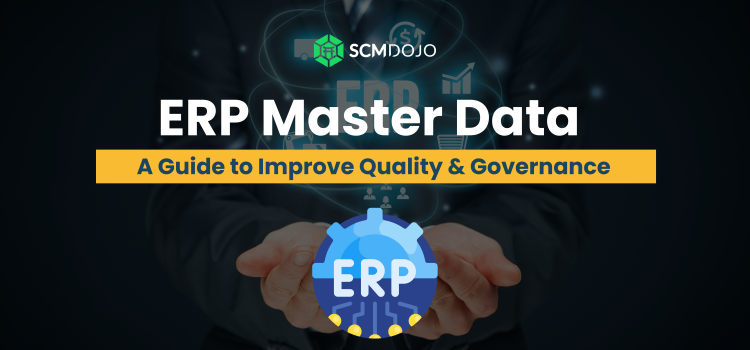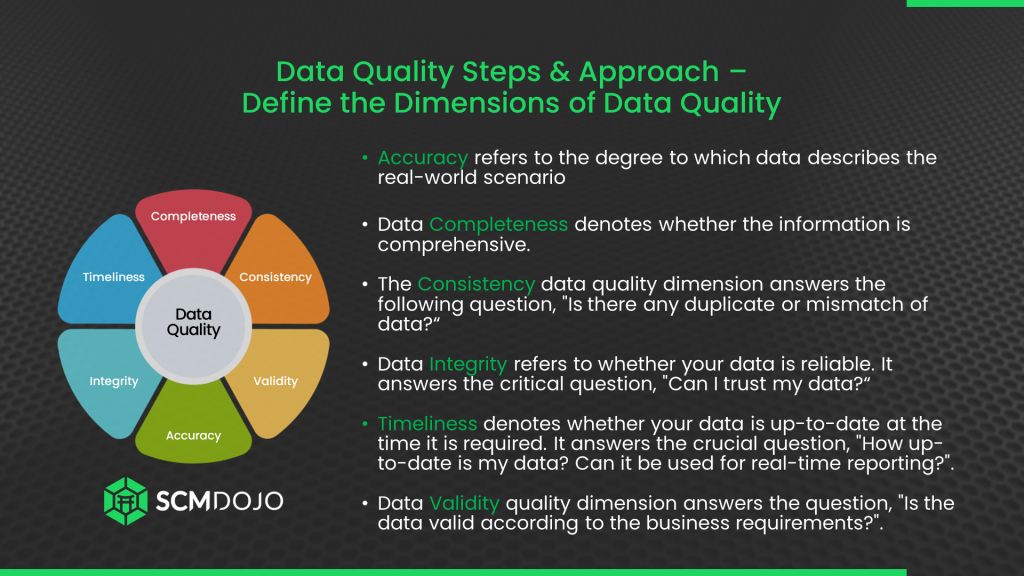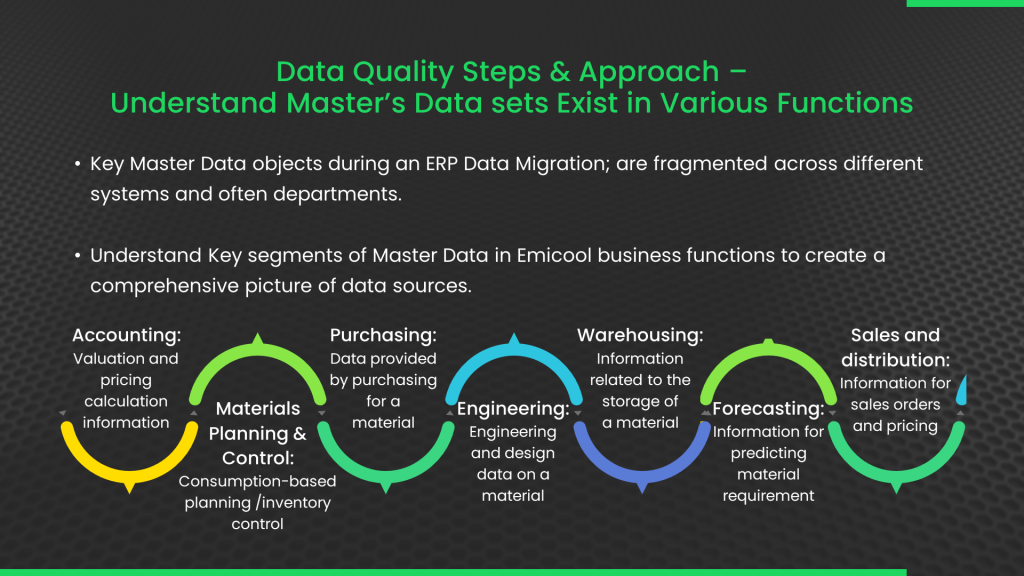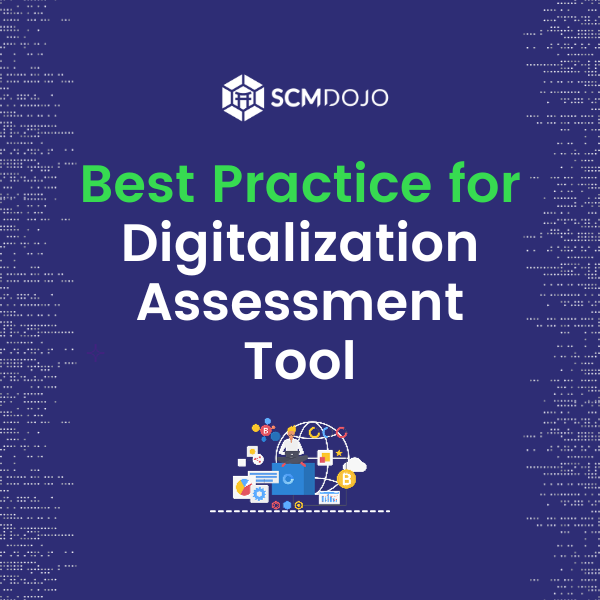In today’s fast-paced business world, organizations are increasingly relying on technology to streamline their operations and stay competitive. One such technology that has gained immense popularity in recent years is Enterprise Resource Planning (ERP) systems. ERP is a broad term that encompasses the financial, manufacturing and distribution capabilities of a company. These systems help organizations to manage their resources more efficiently and effectively. However, the success of an ERP system largely depends on the quality of its master data. Poor quality master data can lead to errors, delays, and inconsistencies, which can have serious implications for an organization’s bottom line.
[Read More: 6 ERP Implementation Failure Reasons]
Enterprise resource planning applications are the foundation of any data-driven company, but tools for data quality management, master data management, and data workflow can help you streamline your processes and manage your master data more effectively.
In the era of data proliferation, master data management has emerged as a pivotal element in ERP implementations and consolidations. When integrating an ERP system, companies often find themselves grappling with the task of harmonizing their inventory, supplier, product, and customer databases. After all, who wants errors lurking in the depths of their master data records? That’s where regular quality checks come into play, forming an indispensable part of your data management (MDM) processes.
As more global enterprises have undertaken or plan to commence an MDM initiative as part of their ERP projects, many companies across various industries are turning to master data management (MDM) software.
In this guide, we will explore the importance of ERP master data, the challenges organizations face in maintaining its quality and governance, and provide some practical tips to help you improve the quality and governance of your ERP master data. So, whether you are an IT professional, a business owner, or a manager, this guide will help you to maximize the value of your ERP system and drive better business outcomes.
To learn more about Supply Chain Information Systems and ERP Systems, you can also check out our fresh new Expert-taught course by Corey Weekes named “Supply Chain Information Systems (SCIS) for Success”.
What is ERP Master Data?
Picture a vault of essential data, and inside, you’ll find valuable nuggets like address information, just waiting to be unlocked.
ERP master data is the core data that is used by an organization’s ERP system to support its business processes. It includes data about customers, suppliers, products, materials, employees, and financial transactions. This data is critical to the functioning of an ERP system and helps organizations to make informed decisions about their operations. ERP master data is usually stored in a centralized database that can be accessed by all business units within an organization.
What sets master data apart is its stability. Unlike the dynamic nature of most data, master data remains relatively unchanged, making it easily recognizable by unique identifiers. Think of bank data, IBAN numbers, or even birthdays when it comes to employee information – these gems stay consistent over time.
While transactional data in an ERP system keeps growing with each new interaction, master data, like product information, remains steadfast, undergoing fewer alterations.
Enter enterprise resource planning (ERP) systems, the centralized hub that breathes life into master data. With ERP, you get the best of both worlds – a single source of truth where master data creation takes place, and this wealth of information becomes accessible to all programs and authorized customers.
In the realm of ERP systems, master data retains a constant volume, setting it apart from transaction data that continually expands alongside new ERP transactions. This centralized creation and availability of master data across programs and approved customers is what sets ERP apart.
Having accurate and up-to-date ERP master data is essential for organizations to effectively manage their resources and operations. It helps to ensure that all business units are working with the same information, which leads to better decision-making and increased efficiency. However, maintaining the quality of ERP master data can be a challenge for many organizations, especially those with complex operations or large amounts of data.
What is Master Data Management (MDM)?
Imagine a cutting-edge technological process and tool that takes your master data to the next level. That’s MDM – Master Data Management. It’s not just about organizing data; it’s about creating a seamless master data solution that brings precision, consistency, and an extensive wealth of information to your entire business network.
Here are some key insights that will help you grasp the essence of Master Data Management (MDM):
- MDM Goes Beyond Technology: While MDM is undoubtedly a technological endeavor, it goes far beyond that. In most cases, implementing MDM involves fundamental changes in business processes. It requires not only technical expertise but also navigating the political landscape within your organization. MDM is about aligning stakeholders, addressing concerns, and championing the cause of clean and reliable master data.
- Creating and Maintaining Master Data: Building a robust foundation of clean, consistent master data is just the beginning. To unlock its full potential, your MDM solution should include tools and processes that facilitate data cleansing and ensure the continuous delivery of high-quality resolutions over time. It’s an investment of time, money, and effort that pays off when you have a well-maintained master data ecosystem at your fingertips.
- The Versatility of Multi-Domain MDM: Depending on your technological setup, you may opt for a multi-domain MDM solution that covers multiple areas or focus on a single domain, such as customers, locations, people, or products. Multi-domain MDM solutions offer a host of benefits, including reliable data stewardship, a minimal technology footprint, and the ability to distribute reference data across various domains seamlessly.
How to Improve ERP Master Data Quality – Steps & Approach
To attain great success in improving master data quality, any initiatives employed is expected to take a holistic approach. Businesses are also expected to address persons, methods, and technology towards improving its business demands for master data quality.
It is essential to note key business obligations first and consider its processes are always more vital than any technological implementation since they are described by the firm’s strategy. So, in improving Master Data Quality, the following steps and approach are to be considered.
Accuracy
Accuracy refers to the degree to which data describes the real-world scenario. Data Accuracy measures data quality with consideration to key metrics like its accuracy, totality, and reliability. Accuracy remains a critical aspect in improving your Master Data Quality. The use of erroneous data could yield poor business decisions that likely raises costs.
Implementing a good step/approach towards improving accuracy for Master Data Quality will include:
- Concentrating on Useful Data
- Examining and Analyzing Errors
- Engaging Standardized Procedures.
- Introduce Automated Input and Analytics tools
Data Completeness
Data Completeness denotes whether the information is comprehensive. To be considered complete, the Master Data Quality must contain all the information required. A good ERP Master Data needs as much of the available data as possible. Information that is not included in Master Data Quality is incomplete data. Whether information has been forgotten or was never collected, without all the relevant data, the dataset is filled with holes and can be misleading.
Consistency In Data Quality
The Consistency data quality dimension answers the following question, “Is there any duplicate or mismatch of data?”
Staying consistent, evaluating data at a field level, and not just at the base level should always be considered. For businesses, data that takes longer to discover will require more time and attention, wasting valuable resources. The ability to keep track of key information at the drop of a hat is critical.
Data Integrity
Data Integrity refers to whether your data is reliable. It answers the critical question, “Can I trust my data?”
Timeliness
Timeliness denotes whether your data is up to date at the time it is required. It answers the crucial question, “How up-to-date is my data? Can it be used for real-time reporting?”.
Data Validity
Data Validity quality dimension answers the question, “Is the data valid according to the business requirements?”
Key Segments of Master Data
Key Master Data objects during an ERP Data Migration are fragmented across different systems and often departments. Understand Key segments of Master Data in business functions to create a comprehensive picture of data sources.
Challenges in Maintaining Master Data Quality
A stellar Master Data Quality holds the key to unlocking exceptional solutions for countless businesses. However, its success or failure ultimately rests on one crucial factor: proper implementation. So, here’s the game plan: we’ll establish a top-notch Master Data Management (MDM) program to ensure lasting Data Quality that caters to the future needs of your organization.
When implementing and maintaining Master Data Quality, businesses typically face the following common challenges:
- Identifying sources of master data
- Identifying the producers and consumers of the master data
- Collecting and analyzing metadata for your master data
- Appointing data stewards
- Implementing data governance program and data governance council
- Developing the master data model
In setting up Master data management (MDM), the following are important to maintain Data Quality for the future:
- Choose a toolset
- Design the infrastructure
- Generate and test the master data
- Modify the producing and consuming systems
- Implement maintenance processes
ERP Master Data Governance – Steps & Approach
Master data governance covers a detailed data handling and management process in line with systems in place and are primarily shared across several platforms and architecture. This type of data is called the master data.
Master data governance also involves the application of data governance factors to the master data. These factors are defined around documenting definitions, metrics, people, processes, policies, rules, and sources towards improving data management.
The following Steps and Approach are important to improving your Master Data Governance:
Identify and prioritize use cases with help from all stakeholders.
- For selected use cases, identify the data requirements
– Create use case(s) for data mapping
– Check if all data is available internally
- Understand the current data landscape
– Number of data sources.
– volume and velocity of data (ERP Data or Emicool might be using a lot of sensors. Hence high volume and high-velocity IoT data need to be handled).
– Create a data catalogue.
– Check the accuracy and completeness of data working closely with domain users.
Designing and implement strategies to clean existing data with the help of domain key users and data specialists can be useful. You can design and implement strategies to clean existing data through:
- Design and implement Data Validation Framework to
– Periodically check the quality of data. This is typically done by the key users and data specialists
– Generate data quality reports.
– Correct identified anomalies.
- Create a data ownership map.
Conclusion
Master data represent data amassed via key business entities required to effectively run businesses or organization. Several businesses are still not optimizing data optimization processes like data quality and master data management plans. The managerial, technical, and technological alterations needed may seem too complex, but you can trust the outcomes to always be positive.
Businesses with data-driven capabilities are always prepared to compete in the ever-driven digital economy. Data management is becoming increasingly relevant in today’s data driven world, and your business will benefit more for the reliable pillars it offers. The use of reliable data is critical and ultimately gets you sustainable data solutions that pay off.
–
About the Author – Dr Muddassir Ahmed
Dr MuddassirAhmed is the Founder & CEO of SCMDOJO. He is a global speaker, vlogger and supply chain industry expert with 17 years of experience in the Manufacturing Industry in the UK, Europe, the Middle East and South East Asia in various Supply Chain leadership roles. Dr. Muddassir has received a PhD in Management Science from Lancaster University Management School. Muddassir is a Six Sigma black belt and founded the leading supply chain platform SCMDOJO to enable supply chain professionals and teams to thrive by providing best-in-class knowledge content, tools and access to experts.
You can follow him on LinkedIn, Facebook, Twitter or Instagram.






